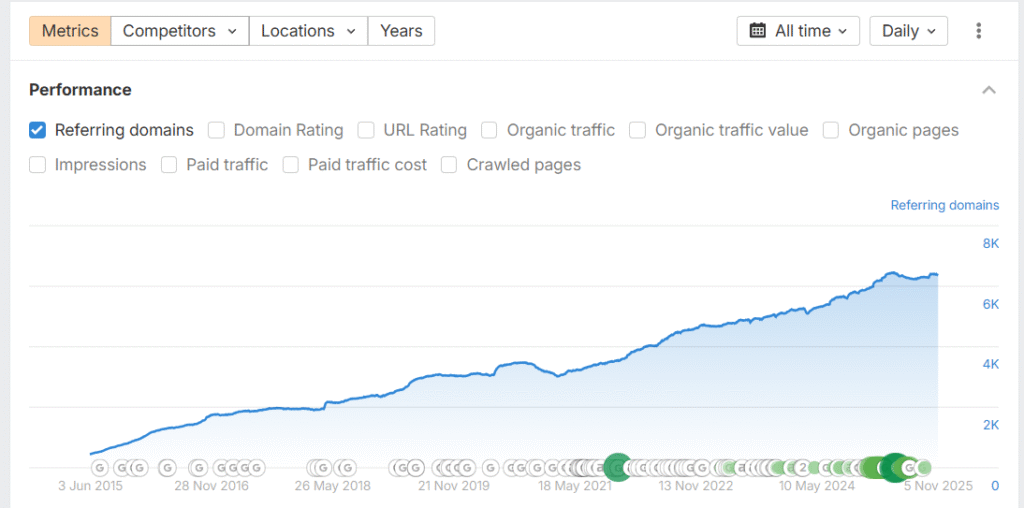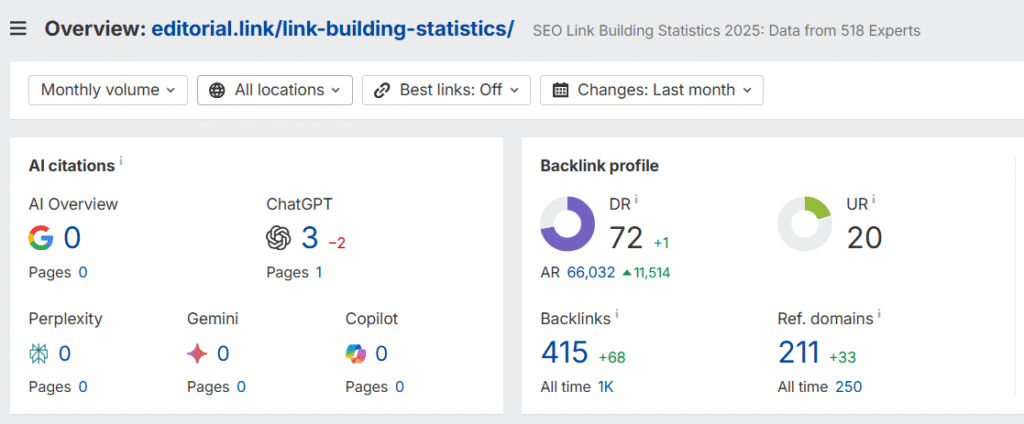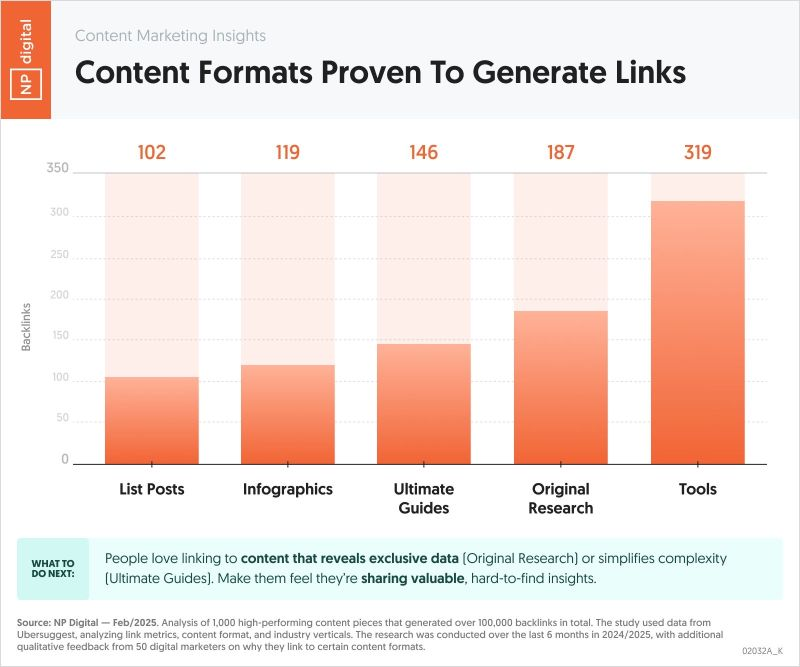Latest update: November 7, 2025
Editorial links are backlinks to another website included in content to add value or reference a source.
Now, it’s important to mention that there’s also a link-building service with the same name — Editorial.Link.

While “editorial links” refer to a specific type of backlink, Editorial.Link is a link-building agency that specializes in earning them. These are two different things.
In this article, I’m going to focus on the concept: what editorial links are, how they work for SEO, why they matter more than ever, and how to attract them.
What Are Editorial Links?
Editorial links are backlinks to your page from other websites. They are earned organically — editors, writers, or website owners link to your site voluntarily because your content genuinely supports or enriches the topic they’re covering.
Editorial links are the gold standard of SEO.
Because they’re unsolicited, they’re a genuine endorsement for your website. The publisher isn’t getting paid, you didn’t ask for it, and you often don’t even know about it until you check your backlink profile.
They link to you simply because your content makes their article better. This is what makes this type of link so powerful.
Here’s a perfect example of an editorial link in the wild:

In this example, Forbes is writing an article about workplace trends that will define 2026.
To back up one of their claims, they link to a CNBC article covering the impact of AI on entry-level jobs.

By linking to the article on a reputable site, the author provides more context for the reader and increases their credibility.
Are editorial links different from niche edits and link insertions?
Editorial links, niche edits, and link insertions are often used interchangeably.
However, they aren’t always the same.
A niche edit or a link insertion is a link inserted into an existing piece — often after asking the editor to do so. Or compensating them for it somehow (payment, freebies, another link).
This makes them a grey/black-hat tactic.
Editorial links can be inserted into existing content, but don’t have to. In fact, most of them appear in new articles. You may share your article or report with the editor, but you don’t ask for the link. So it’s a white-hat strategy all the way.
Why Are Editorial Links Important?
Editorial links are the most valuable type of backlinks because they signal genuine trust and authority to Google.
Google’s entire algorithm is built on finding the most trustworthy and authoritative content (the A & T in the E-E-A-T framework).
A sponsored link, a link you create yourself in a comment section, or a link on a random website of questionable quality doesn’t build trust.
But an editorial link from a high-authority publication?
That’s a powerful, third-party “vote of confidence” that boosts your authority. And Google takes it very seriously.
Purchased Links vs. Editorial Links
The main distinction between editorial and purchased links is that editorial links are earned, while purchased links are paid for.
You attract editorial links because your content provides real value. You get a paid link because your bank account provides cash.
Now, you may sometimes hear people talk about “buying editorial links.” And wonder how you can possibly buy them if they are “earned”?
“Paid editorial links” can mean two things:
- Earned-for-You Services: This is the legitimate, white-hat model. You aren’t buying a link; you’re paying for the expert labor and relationships required to earn a link on your behalf. This includes creating linkable assets, running digital PR campaigns, and performing professional outreach.
- “Premium placements”: You acquire “editorial links” on high-DA sites for a fee. As this is a paid placement disguised as an editorial link, it qualifies as a black-hat tactic because it violates search engine guidelines. If detected, such links can lead to penalties (or get ignored by Google = waste of money).
Benefits of Editorial Links
The SEO value of editorial links is massive. But the benefits of editorial links go beyond high rankings in search results.
Editorial links build brand awareness
Editorial links increase your brand’s online visibility.
When your company, product, or leader is mentioned on Forbes, TechCrunch, or a major industry blog, you’re not just getting a backlink; you’re getting exposure. This builds brand credibility and establishes you as a leader in your niche.
This is even more critical in the new AI search era. Google’s AI Overviews and other generative models pull information from credible sources.
So genuine and natural mentions on authority sites — even without a hyperlink — carry a lot of weight. They make your content the citable source AI relies on.
Editorial links bring referral traffic
The traffic you get from an editorial link is often the highest quality traffic you can get.
Think about it.
These aren’t random visitors that sometimes stumble upon your blog.
Someone is reading a trusted article, sees a link to your resource, and clicks it to find more information. They arrive on your site pre-qualified and already trusting you by association.
This referral traffic is far more likely to engage, subscribe, or buy.
Editorial links get you featured in high-quality publications
Editorial links create momentum for your SEO efforts.
Getting your first link from a high-quality publication acts as a “stamp of approval” for other editors.
Once Search Engine Land cites your data, it makes it much easier for a writer at Hubspot or Zapier to cite you, too.
Editorial links are a scalable link-building method
This might sound counterintuitive, but editorial links are a scalable method for acquiring quality links.
How so?
It’s scalable because you front-load the work. You don’t build one link at a time. You build one linkable asset that can generate dozens of editorial backlinks on its own.
The best part?
A single piece of original content can attract links for years with little additional work (you still need to update them, but the bulk of the work is done up front).
For example, Backlinko’s article on Google ranking factors continues to earn links 10 years after its publication.

How to Earn Editorial Links
Okay, so how do you actually get editorial links?
You have to earn them. And you do that by creating “linkable assets” — content that journalists and editors actually want to link to.
1) Create original research reports and stat roundups
Creating original research and stats round-ups is perhaps the most effective strategy to secure editorial links.
The reason? Journalists and bloggers need quality data to support their arguments.
By publishing original surveys, industry reports, or data analysis, you become the primary source they have to cite. This is the number one way to generate high-quality editorial backlinks.
For example, Editorial.Link’s State of Link-Building report has earned over 400 backlinks from 200+ unique domains.

But let’s face it: Original research is time-consuming and expensive. A survey report can easily cost $10-20k. It’s money well spent, but not every team has such resources.
Collecting stats for such a roundup takes time, too but a good writer will charge you a tenth of what you’d have to spend to run a study.
2) Write definitive guides
A definitive guide is the single most comprehensive resource on a given topic. By creating content that is more thorough and more up-to-date than anything else on the internet, you become the go-to citation for that subject.
According to NP Digital data, ultimate guides are the second most-linked-to resources,

Surprised? Considering websites seem to be favoring shorter pieces focusing on specific questions at the moment, I am.
And yet, here we are: If you want editorial links, write definitive guides.
3) Build relationships in your industry
Building genuine relationships with journalists, editors, and influencers in your niche is the cornerstone of effective link-building.
Websites don’t link to your content. People do.
So follow them, share their work, and offer value before you ever need anything. When you finally publish that big study, you’ll be pitching a colleague — maybe a friend even — not a stranger.
4) Create phenomenal infographics & visual assets
High-quality visual content, such as infographics, charts, and diagrams, is highly shareable and attracts links from other creators looking to add visual value to their own content.
Pages with visuals generally attract more links and images, and are easier to discover via visual search.
5) Promote your content with digital PR & outreach
“Publish and pray” doesn’t work.
Instead of waiting for people to discover your content organically, promote it proactively with digital PR and outreach.
Digital PR is the most effective tactic for earning editorial links at scale. By pitching your content to journalists, you can land links in high-authority national papers and magazines that charge tens of thousands for sponsored posts.
And as mentioned, such placements put the flywheel in motion. As the content lands in front of more people, it attracts more links.
But don’t stop there! Promote your linkable assets everywhere.
Share them on social media, mention them in your newsletter, and even consider running paid ads to get it in front of the right audience.
What Are The Best Editorial Links Services?
Earning editorial links is hard work. It takes time, strategy, and expertise.
That’s why many SEOs and marketers choose to partner with an agency that specializes in it.
But this could be risky. If you choose the wrong service, you can burn through your budget in no time and even end up with a Google penalty.
If you’re looking for a trusted partner to help you earn real editorial links, Editorial.Link is one of the most recognized and award-winning link-building services.

The agency focuses on white-hat, quality backlink acquisition, helping brands secure placements on high-authority websites that bring both SEO value and real traffic.
The Future of Editorial Links in the Age of AI
The search landscape is undergoing a shift. With Google’s AI Overviews and the rise of “zero-click” searches, many have asked if backlinks still matter.
The answer is yes — arguably more than ever.
The new “top spot” isn’t just ranking #1; it’s being the cited source in the AI-generated answer. An authoritative, editorial link is a strong signal to an AI that your content is a trustworthy source on a topic.

